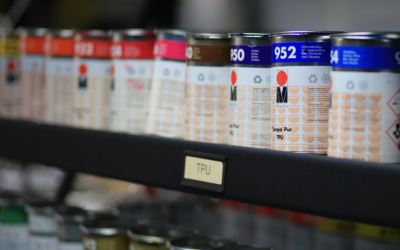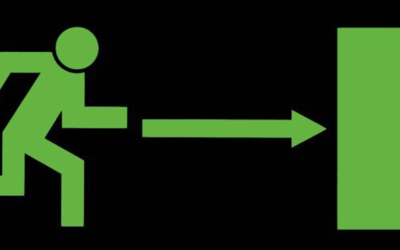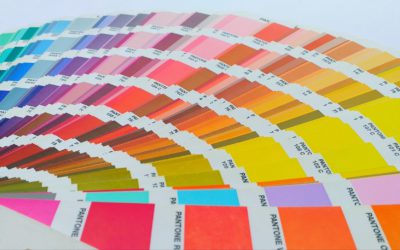Printing on flat surfaces—like signs, T-shirts, or boxes—seems straightforward enough. But what if you want to print on a shampoo bottle, coffee mug, or water bottle? For projects like these, there are two printing methods that are commonly used—screen printing and pad printing. They’re very different from one another and the one you choose depends largely on the object you’re printing on and the design or image you’d like to print.
We’ll break down each process and help you understand what to consider when you’re trying to decide between screen printing or pad printing for your next project.
Screen Printing: It’s Not Just for T-shirts!
If you’ve ever had T-shirts made, you’ve probably heard the term “screen-printing,” but this method of printing is for so much more than shirts—it can be used on cups, jars, tennis balls, and other curved objects.
Screen printing first originated in China over a thousand years ago, and continues to be used widely today. Remember the iconic HOPE poster from the 2008 Obama campaign? With it’s simple colors and bold imagery, artist Shepard Fairey’s viral portrait is an example of screen printing we’re familiar with.
The screen printing process itself is simple. The printer starts with a flat sheet of woven, mesh fabric or screen. They apply a stencil to the screen, then lay the screen on top of the object being printed. Ink is spread over the screen, and a roller or squeegee is used to push the ink through the tiny holes of the screen and around the lines of the stencil, which creates the desired print or design on the object below.

With screen printing, ink is spread through the screen and around the stencil, transferring the image to the object beneath the screen.
Screen printing is great for projects with large designs or designs that are being printed on larger areas. When printing cylindrical objects, like cups or bottles, the screen is stationary and the object rotates below while the squeegee transfers the ink. Screen printing produces very reliable ink coverage, but it can sometimes be difficult to achieve clean, sharp lines or very intricate designs. Like the Obama HOPE poster, you can use screen printing for designs with multiple colors, but each color has to be applied one at a time, and the ink must be allowed to fully dry before the next color is added. The more colors used, the more set-up there is, the longer it takes, and subsequently the higher the cost.
Pad Printing: Not Your Kindergarten Teacher’s Rubber Stamps
Pad printing is a process that was developed several hundred years ago but was industrialized in the mid 1900s by Swiss watchmakers who prized its ability to imprint watch faces with great detail and precision.
Rather than using screens and stencils, pad printing uses ink plates and pads. First, your design is etched into a plate and ink is added to the groves of the etching. A flat pad is pressed onto the ink plate, transferring the image to the pad. Then the pad stamps the image onto the object you want printed.

The pad printing process is similar to using a large (much more sophisticated) stamp to pick up the image from the ink plate and transfer it to the object being printed on.
The pad is typically made of flexible silicon, so it easily conforms to any shape, making it ideal for printing on curved or cylindrical surfaces. The result is a very sharp image with clean lines, making pad printing a great option for smaller designs or designs with a lot of detail—like a logo on a golf ball or text on a prescription gel capsule. Similar to screen printing, pad printing can be used to create multi-colored prints, and each color has to be applied one at a time.
Screen Printing or Pad Printing: Which is Better?
Both screen printing and pad printing produce excellent results—when used for the right purpose. Either can be used to print on almost any type of material—plastic, glass, metal, rubber, wood—depending on the type of ink used.
Although both methods are good options for printing on cylindrical objects, screen printing is the better choice if you need to print 360 degrees around the entire object. Pad printing is best if it’s used for projects that wrap 90 degrees or less around an object. And, because pad printing tends to be used for more specialized and precise applications, it’s generally more limited than screen printing.
Whether you’re planning to invest in bringing your printing production in-house or outsourcing your projects to a printer, Marabu can help you determine the best ink for your project. We produce inks made specifically for both screen printing and pad printing methods. For questions and to learn more, you can reach out to one of our distribution partners or contact us directly. You can receive more printing tips here.



